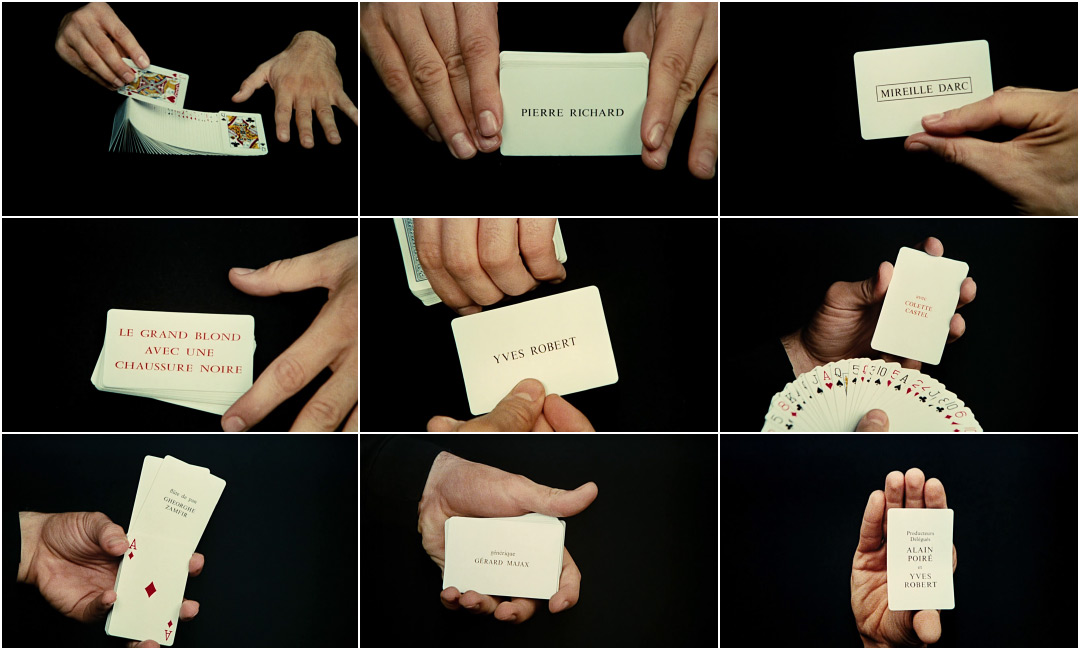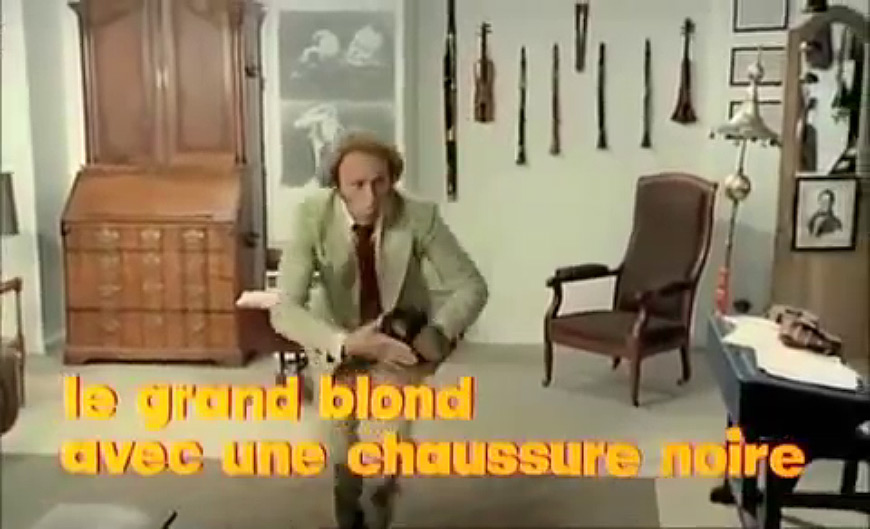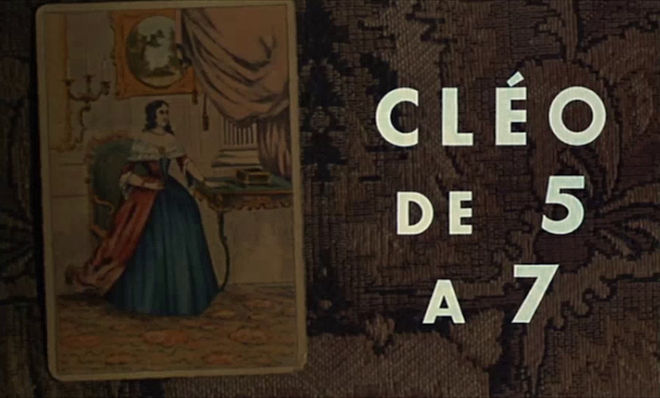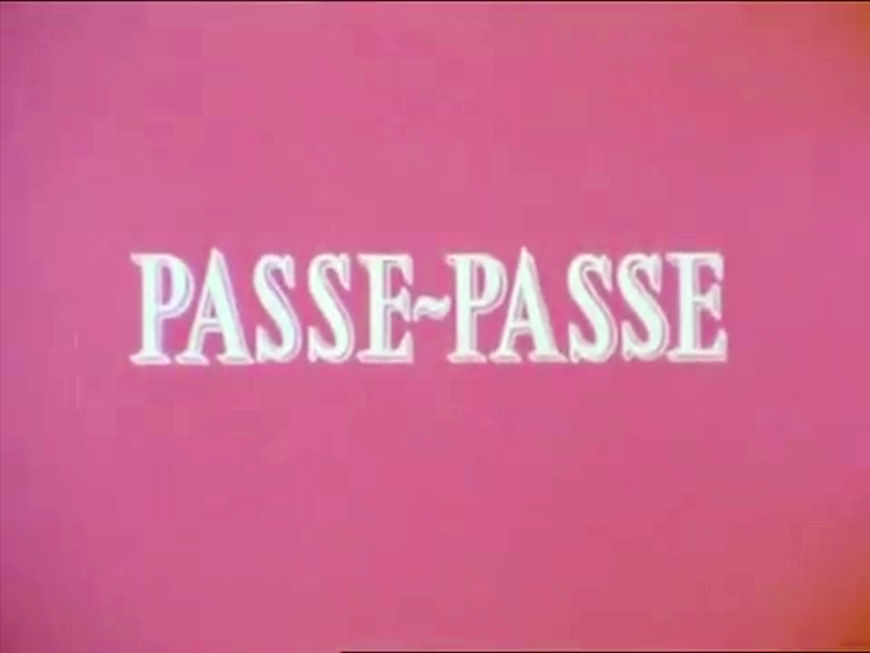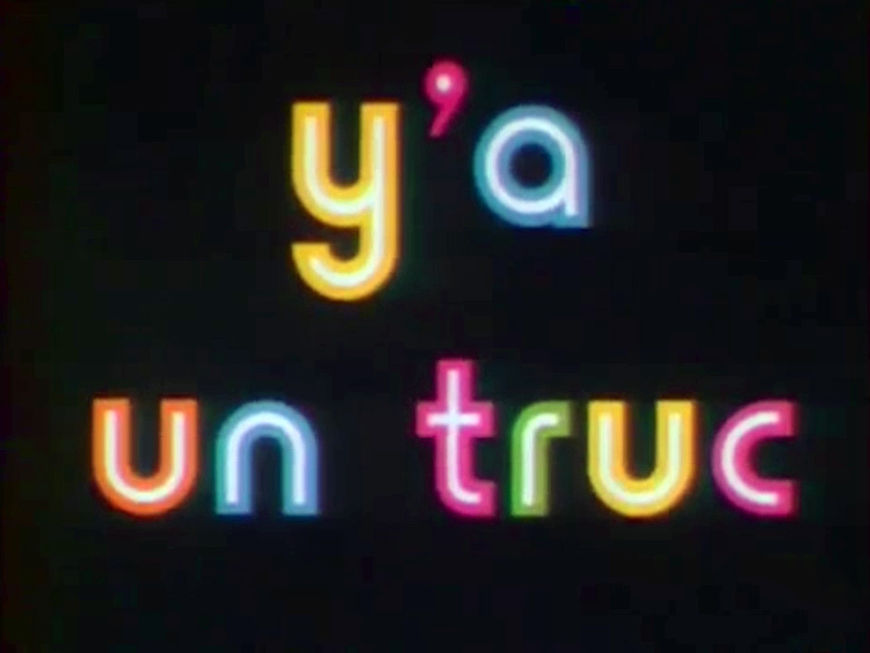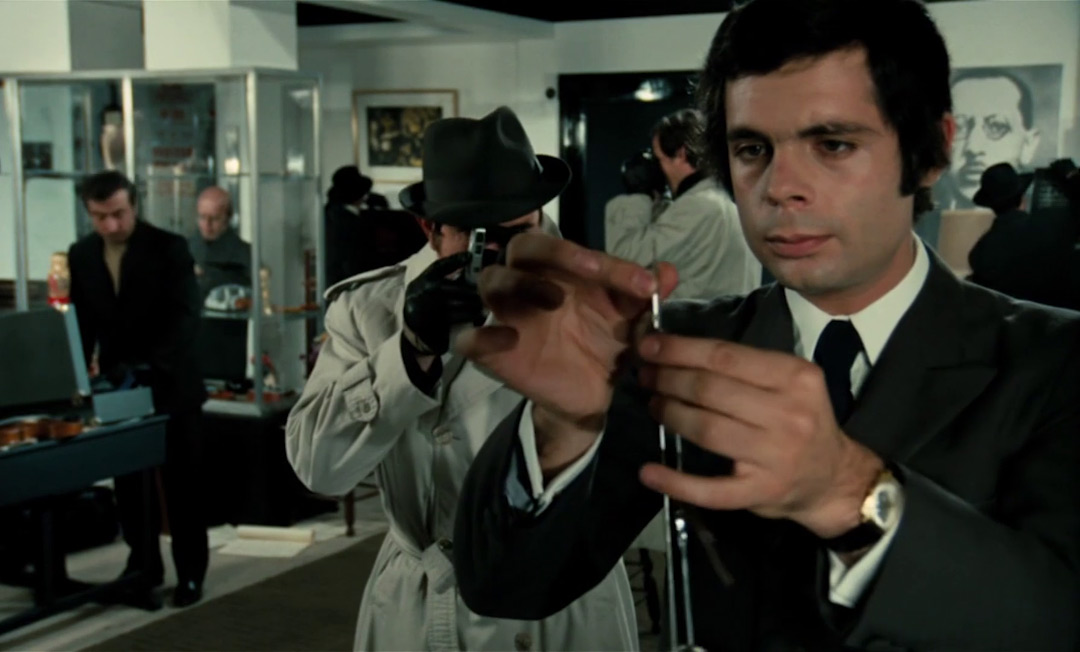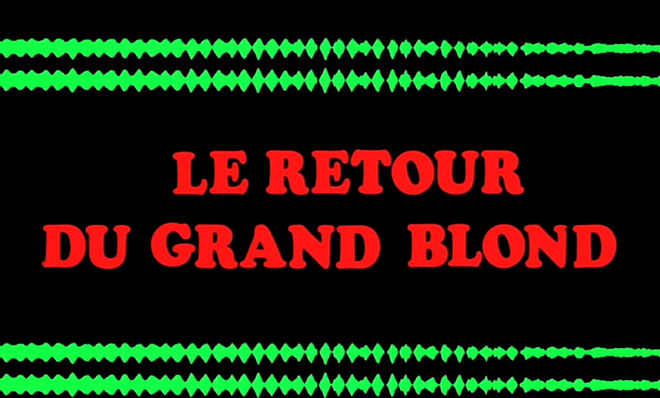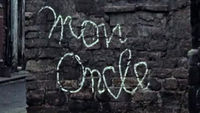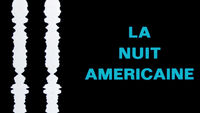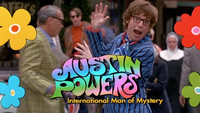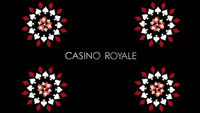The Tall Blond Man with One Black Shoe. The film’s title is certain to tug at your curiosity. Read it or hear it and you’ll likely picture a lanky figure, clumsily stomping about in mismatched shoes – and you wouldn’t be entirely wrong to expect that.
One part North by Northwest, one part The Pink Panther – a story of mistaken identity with an unwitting fool at the center of the action – The Tall Blond Man with One Black Shoe, better known by its French title Le Grand Blond avec une chaussure noire, is a 1972 spy spoof from filmmaker Yves Robert (La Guerre des boutons) starring comic actor Pierre Richard in a role he would play four more times over the next decade.
Le Grand Blond follows François Perrin (Richard), a bumbling violinist who unknowingly becomes tangled up in a battle between rival factions of the French secret service. Picked out of an airport crowd because of his mismatched shoes – the result of a practical joke – and used as a decoy in an operation to expose an ambitious spymaster (Bernard Blier) as a traitor, Perrin haplessly avoids capture through a combination of ignorance and sheer luck. The musician’s apparent cleverness and repeated escapes soon have agents from both factions convinced that he may actually be a brilliant super spy working for the other side.
Le Grand Blond avec une chaussure noire (1972) theatrical trailer
The film’s opening title sequence introduces viewers to this darkly comic world by way of a catchy tune and a deck of cards. This perfect pairing of performance and music sets a playful and mysterious tone. Composer and frequent Robert collaborator Vladimir Cosma builds the film’s score around the pan flute (played by Gheorghe Zamfir of Picnic at Hanging Rock and “The Lonely Shepherd” fame), an instrument from his native Romania that was completely new to Western Europe at the time.
“The Grand Blond score by Vladimir Cosma is one of the most famous tunes in French cinema,” says French film and design scholar Alexandre Tylski, author of Les plus beaux génériques de films – a French-language text on title design. Tylski says the sequence remains a popular example of French title design, but it’s not necessarily something film students would study in school.
He also notes some similarity between the opening of Le Grand Blond and another French film: Agnès Varda’s 1962 film Cléo from 5 to 7 (Cléo de 5 à 7), which presents its credits atop tarot cards as a fortune teller reveals the titular character’s future.
Cléo de 5 à 7 (1962) aka Cléo from 5 to 7 main titles directed by Agnès Varda
In Le Grand Blond, François Perrin’s fortune isn’t told by the title sequence, but something of his true nature is revealed as two hands deftly introduce the film’s cast and crew. The credits are a veneer that masks the skillful deception happening right in front of our eyes. Like us, Perrin is oblivious to his situation, so much so that it’s oddly charming. He’s so naive about the dangerous world that he inhabits that’s it’s, well, almost magical. To infuse Le Grand Blond titles with that magical quality Robert enlisted the skills – and hands – of a real magician: legendary French illusionist Gérard Majax.
“Mr. Yves Robert, the director of the movie, contacted me and asked me if I would be able to make a title sequence with cards,” Majax says. The magician, who is renowned for his card tricks, was a fixture on French television and in the Paris entertainment scene at the time. Majax first encountered Robert after the filmmaker attended one of his magic shows shortly before production began on Le Grand Blond. “He wasn’t familiar with me personally, but I was well known in France at the time.”
Passe-passe (1973) main titles, featuring magic by Gérard Majax
Y’a un truc (1975) main titles, featuring magic by Gérard Majax
When it came time to shoot the title sequence, Majax says Robert personally oversaw the production. “He directed me. He printed the cards and I rehearsed the moves. Then he just told me the words he needed to appear and I chose the move I wanted to do to reveal them,” Majax recalls. “It was just one move after the other. There was nothing to it really! Nothing special to the tricks. Some of the moves I had used before in television shows.”

Le Grand Blond avec une chaussure noire director Yves Robert on set.
Majax’s brief magic show kicks off Le Grand Blond in fine style, but sadly the magician’s title sequence trickery was not seen outside of France until recently, having been cut from the original English-language version of the film. “When the movie was translated for the US market it was not possible to print cards with English words, so they just created normal titles,” Majax explains. “My card tricks and hands were gone. They replaced my moves, my hands, and the cards with words, but they kept the credit ‘Titles by Gerard Majax’. My American magician friends never understood why I was credited with the titles because it was only words!”
Majax’s magic may have ended up on the cutting room floor for the US release, but he remains a presence in all versions the film thanks to a cameo appearance (“It’s a very little part,” laughs Majax) as a “Magician Spy” who searches Perrin’s apartment the way only an illusionist could.
A scene from Le Grand Blond avec une chaussure noire (1972) aka The Tall Blond Man with One Black Shoe featuring Gérard Majax as the "Magician Spy".
Nearly 45 years later, Majax looks back on the experience fondly, but doesn’t feel like the title sequence was an accurate showcase of his talents. “I do thousands of tricks,” the magician chuckles. “I did 17 years of of weekly television, one hour programmes with 60 to 70 tricks in each one. That means thousands and thousands of moves on every programme.”
The real pleasure of working on Le Grand Blond avec une chaussure noire, Majax says, was meeting its director. “To get to know Mr. Yves Robert, who I admired very much, and become friends with him, it was wonderful.”
Majax worked with Robert again on the 1974 sequel to Le Grand Blond – Le Retour du grand blond – in which the illusionist performs an elaborate card-based recap of the first film in his trademark style.
Le Retour du grand blond (1974) aka The Return of the Tall Blond Man with One Black Shoe main titles, designed by Michel François and featuring Gérard Majax.
As the designer and performer of the card tricks in the opening of Le Grand Blond, the creation of title sequence is rightfully credited to Majax, but Alexandre Tylski says it ultimately fell to a title designer to print the credits on the playing cards and assemble the opening. “Majax did not work on the design of the title sequence. Michel François did,” Tylski says. “François did thousands of film titles in France. Only a few of them are listed on IMDB.”
François, one of France’s most prolific title designers and trailer editors, also created the opening sequence for Le Retour du grand blond that preceded Majax’s card routine. Tylski notes that the sequel’s title sequence is very reminiscent of François’ work on the opening of Truffaut’s Day for Night (La Nuit Américaine), which was released a year before. Whether this was an intentional spoof of his earlier work or simply a filmmaker asking for more of the same, it’s an notable example of an issue many designers have to deal with to this day.
Tylski laments that the work of French title designers such as François and Jean Fouchet remains mostly uncredited and largely unappreciated. “Film critics and academics have forgotten title designers,” Tylski says. “How can you pretend to write seriously on cinema without studying film openings and endings and their creators?”
Our thanks to Christian Annyas of The Movie Title Stills Collection for providing selected video assets for this feature.
Director: Yves Robert
Titles: Gérard Majax
Title Designer: Michel François
Music: Vladimir Cosma
Pan Flute: Gheorghe Zamfir

